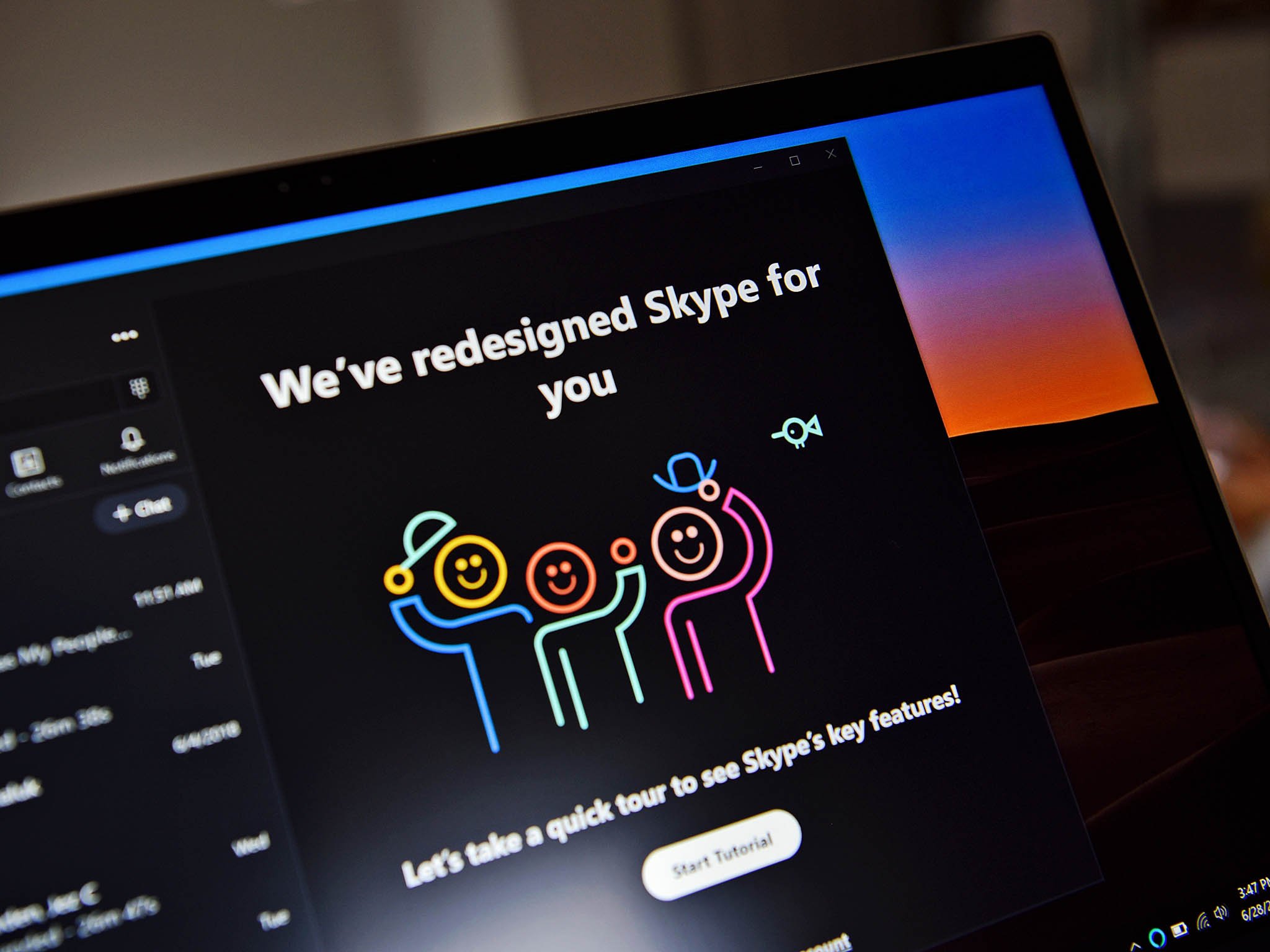Microsoft swaps Skype over to Electron on Windows 10
The new Skype has some new features, but not everyone will be happy to receive it.

What you need to know
- Skype version 8.61 (Windows 10 version 15) is now generally available.
- The new Skype runs on Electron rather than React Native.
- The new Skype has some new features but might use more system resources.
Microsoft rolled out an update to Skype on Windows 10 today (via Neowin). The update brings Skype to version 8.61 (Windows 10 Version 15) and includes several new features.
The latest version of Skype on Windows 10 supports up to nine people in a video call, background replacement, and several other improvements. While some will be happy with the change, others will be frustrated because the latest version of Skype for Windows 10 is an Electron app. Electron apps often take up more RAM and system resources than React Native counterparts, such as the previous version of Skype. Part of the reason Skype moved to Electron is because Microsoft is combining Skype for Windows 10 and Skype for Desktop. The move allows them to be updated together.
Microsoft updated an answers post today that announces the rollout of Skype 8.61. The post also links to a Skype FAQ page that breaks down the app's new features. Here's what's new in Skype version 8.61:
- Updated close options so you can quit Skype or stop it from starting automatically
- Improved Tray icon, informing you about new messages and presence status
- Share files directly from your File Explorer
- 9 videos in a video call
- Background Replacement
- Moderated Chats
- Meet Now Improvements
- Improved Call Controls
Insiders first saw this change in March, but the new version is now rolling out to everyone. Skype's move from React Native to Electron is the opposite of what the Xbox team is doing. In contrast to Skype's move, Microsoft's Xbox app recently switched from Electron to React Native, which resulted in better performance and a smaller download size. It's unclear if Skype's switch in the opposite direction will yield worse performance, but it's worth noting the opposing directions.
All the latest news, reviews, and guides for Windows and Xbox diehards.

Sean Endicott is a news writer and apps editor for Windows Central with 11+ years of experience. A Nottingham Trent journalism graduate, Sean has covered the industry’s arc from the Lumia era to the launch of Windows 11 and generative AI. Having started at Thrifter, he uses his expertise in price tracking to help readers find genuine hardware value.
Beyond tech news, Sean is a UK sports media pioneer. In 2017, he became one of the first to stream via smartphone and is an expert in AP Capture systems. A tech-forward coach, he was named 2024 BAFA Youth Coach of the Year. He is focused on using technology—from AI to Clipchamp—to gain a practical edge.
